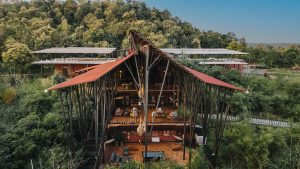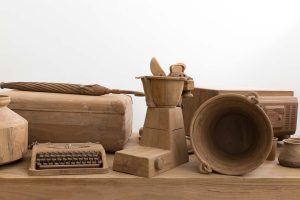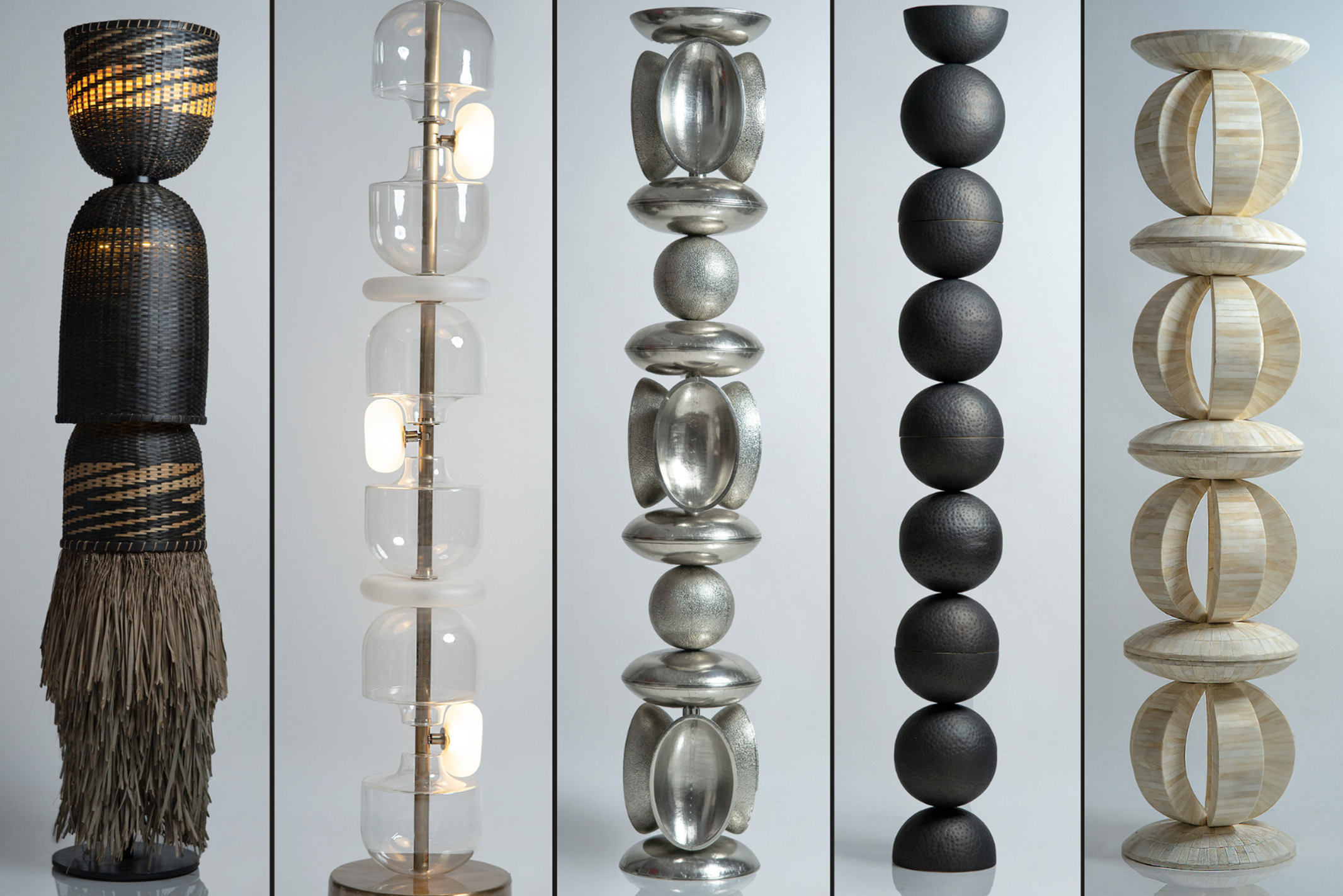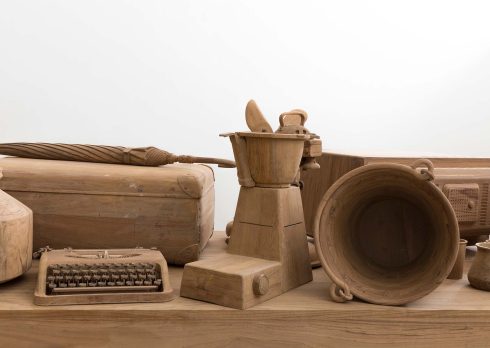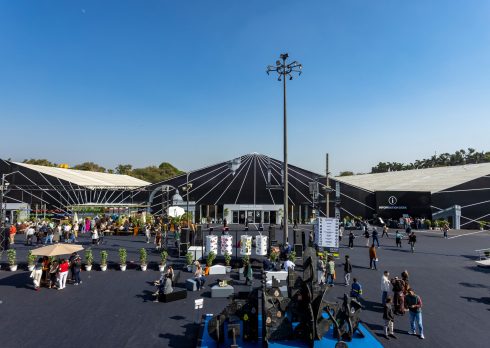An Insight Into STAMBH – An Exquisite Exhibition Of 21 Divine Pillars By Ashiesh Shah
The Indian ethos has been ‘pillared’ basis the Hindu Vedic literature. The cosmic pillar, the axis mundi or the ‘stambh’ has been the representational force connecting the celestial and the terrestrial. Iconographically, these are often represented on temple edifices and religious structures. But its interpretation truly goes beyond the defined canons of ancient scriptures! Reflecting on the very genesis of these pillars, Ashiesh Shah unveiled an exquisite collection of 21 divine pillars under his eponymous atelier in a collaborative effort with the Abheraj Baldota Foundation (a part of Sustain 2023 curated by G20 Culture Working Group). “In my curatorial vision, this body of functional art, with its minimalism, transcends borders and time in its appeal”, says curator Lavina Baldota. The tri-day exhibit delves deeper into indigenous craftsmanship while reinterpreting the Indic stambh.
“In my curatorial vision, this body of functional art, with its minimalism, transcends borders and time in its appeal ” – Lavina Baldota
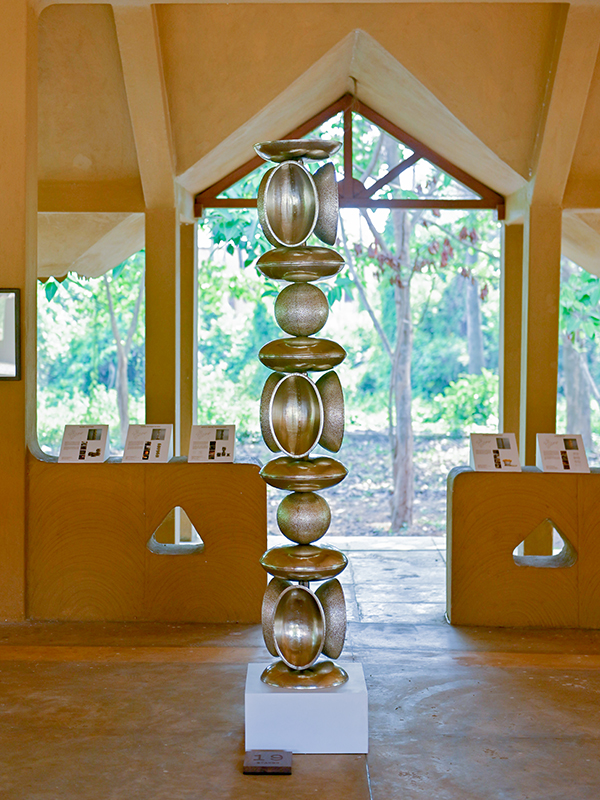
In the words of Shah, “Each pillar was kept to about five and a half to six feet to be able to create uniformity within them. Also interesting was the idea of having versatility in terms of the form and how each form led to the other. Once the language was set, once we knew the geometry- inspired by cosmic ancient Indian geometry and primitive indigenous forms of gods and goddesses – the story of the pillars started”. Choreographed within Kala Bhoomi – in the temple city Odisha – each pillar elegantly stands within this art sanctum – sacred, mythical, earthy, and raw.
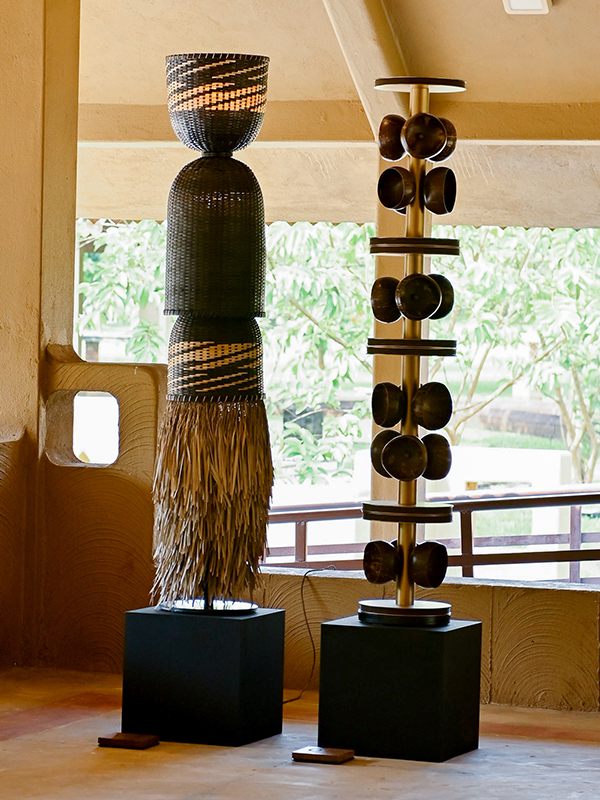
The ‘Naga Raincoat Stambh’ welcomes one as they begin their circumambulatory journey around the cosmic pillars. From far off, the pillar seems like a member of an native Nagaland tribe bearing the ‘Enhiye’ cloak – a braided garment made of dried elephant grass – dancing to the dumroo beats of the neighbouring ‘Coconut Shell Damroo Stambh’. This pillar pays an ode to the raw coconut motif, a native to Konkani coastal stretch of Maharashtra and Goa.
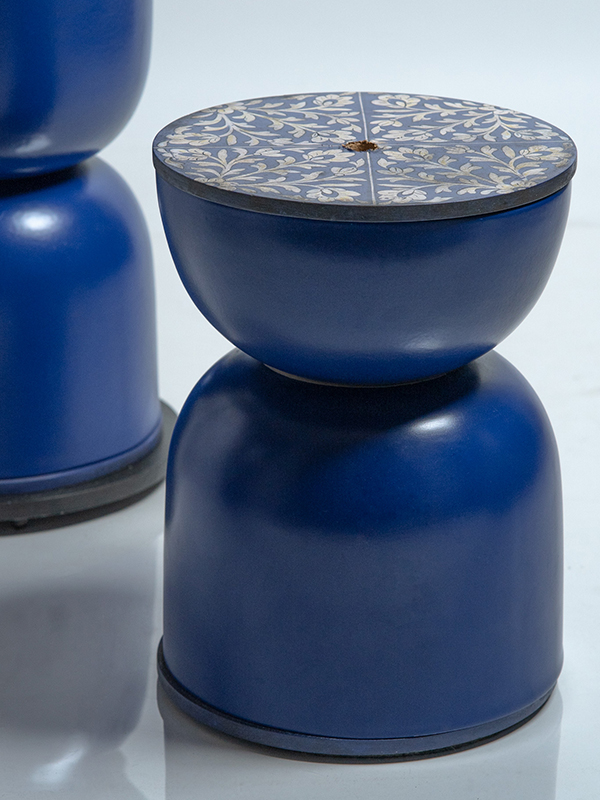
Opposite this muted earthy spectacle, there is a burst of red, blue, and green. The indigenous style sets them apart while their functionality unifies them. Each fixture becomes a reversible stool. The stark cobalt blue represents the blue city Jaipur. The ‘Blue Pottery Stambh’ reignites the Jaipuri blue pottery and natural dyeing techniques. Don’t miss to catch a glimpse of the ultramarine hued arabesque motif on the verso of every stool!
Also Read : MAP Museum Of Art & Photography Signals A New Era For Museums In Bangalore
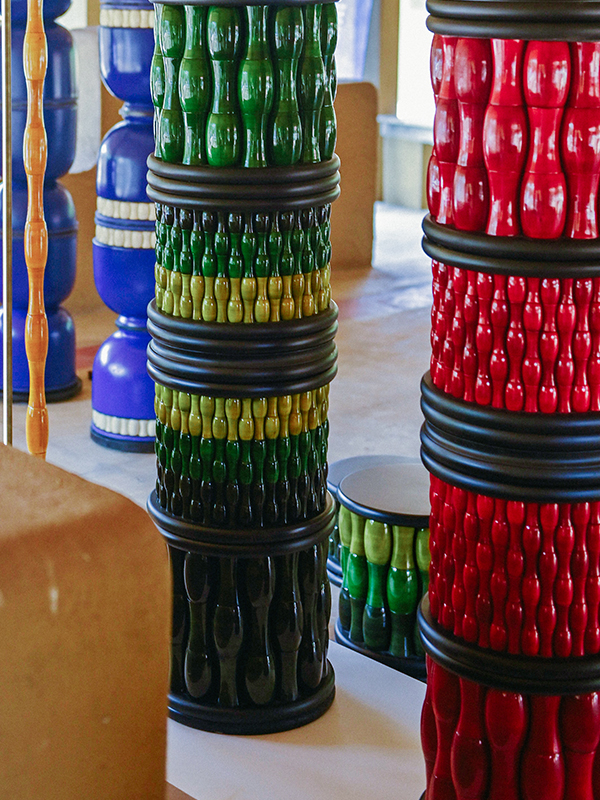
Echoing a similar sentiment, Shah revisited the 18th century Tipu Sultan’s toy making craft tradition called Channapatna. Deriving its name from this craftsmanship, the ‘Channapatna Stambh’ culminates using beeswax lacquer, coloured concave-convex beads and natural dyes. Shah comments, “In Channapatna, it was not possible to go within the six-inch bracket because that is what they had in terms of their traditional equipment, and we did not want to break that chain. So, we created the idea of beads and manka – that means from the heart, and then multiplying them to create different objects.”
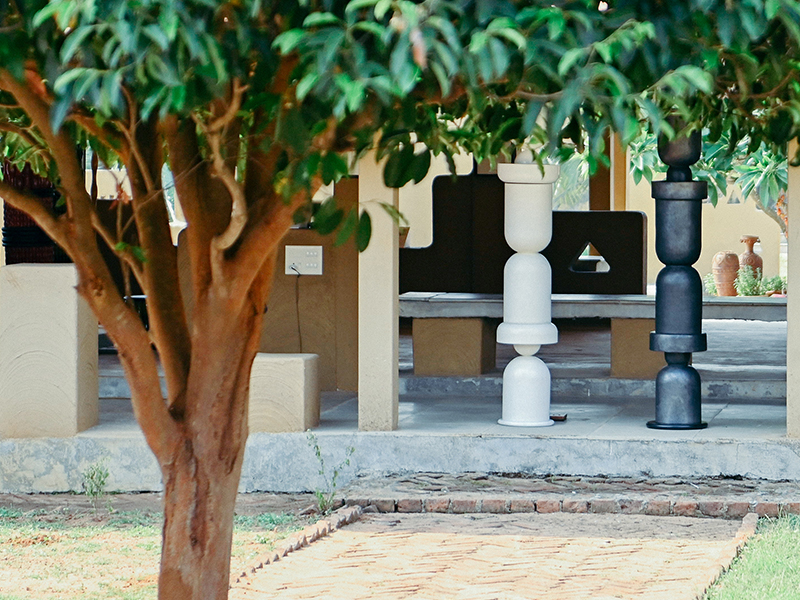
As one moves further in the corridor, two monochromatic pillars from Manipur and Rajasthan explore a similar three vase visual motif. The ‘Longpi Stambh’ is attributed to Goddess Panthobi, the Manipur Pottery tradition in Longpi village. The structure is sculpted using Humnali (a special clay) and black serpentine stone. Similarly, the ‘New Moon Marble Stambh’ (Rajasthan) and ‘Monoform Candle Stambh’ (Uttar Pradesh) are hand-carved to perfection using fine grained white marble and white Alabaster respectively.
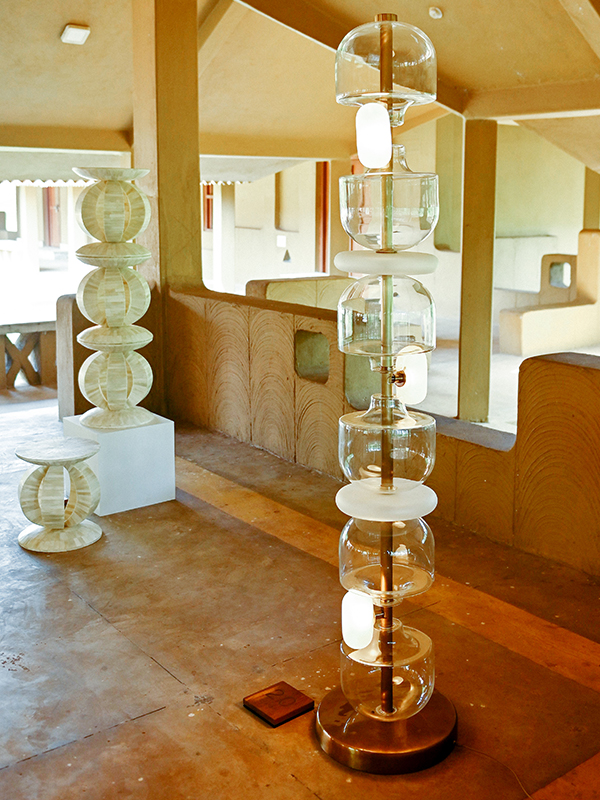
At the heart of the space, Shah presents the ‘Talisman Blown Glass Stambh’ from Uttar Pradesh. The ancient craft of hand-blown glass is believed to have originated as far as the 1st century BC. The talismanic structure indeed brings luck to the art sanctum as it lights like a diya within the temple’s garbhagriha or the sanctum sanctorum. Inspired by the use of Shola in Puri’s Jagannath Temple, the ‘Sholapith Lamp Stambh’ contemporarily reincarnates the floral motif on metallic discs.
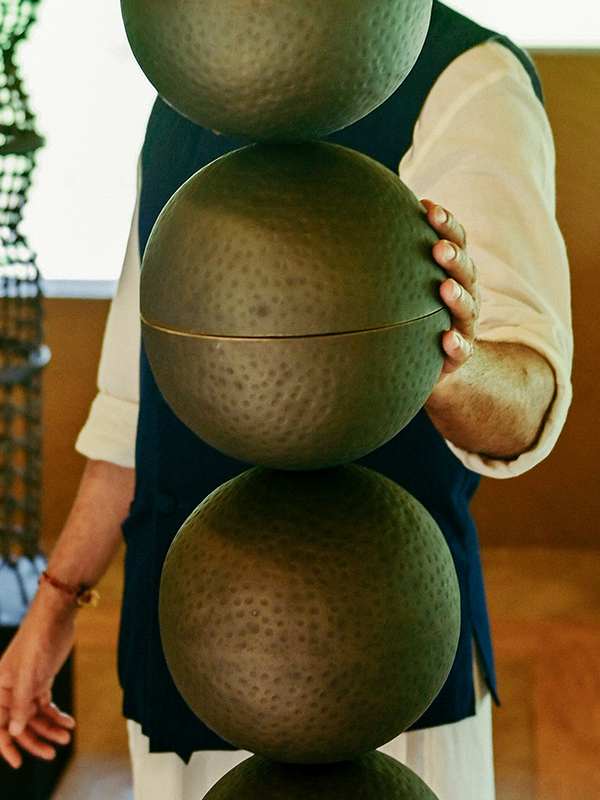
Shah presents a play in multiple mediums and forms – ones specially from Rajasthan – including the ‘Multi-Crescent Bone Stambh’, the ‘White metal Patchwork Stambh’, and ‘Raw Crystal Mini Stambh’. “Stambh is not merely the culmination of 10 years of my practice with the craft and idea of pillars; instead, it marks the beginning of a transformative journey. It represents a continuum, an ongoing exploration of my skills and passion. This project is not the end, but rather a new chapter, and it will undoubtedly become a significant part of my artistic journey with the country. Stambh is a testament to the continuous evolution and growth of my craft”, says Ashiesh Shah.
Note: The exhibition ‘Sustain: The Craft Idiom’ is a specially curated cultural project for the 2nd G20 CWG meeting (May 14 to 17, 2023) in Bhubaneswar, Odisha, by the Ministry of Culture, Government of India. The theme of the exhibition is predicated on and reflective off the second priority of the Culture Working Group (CWG) – ‘Harnessing Living Heritage for a Sustainable Future.’ The exhibition is being held at Kala Bhoomi – Odisha Crafts Museum from the 16-22 May 2023.‘ Sustain: The Craft Idiom’ is composed of three constituent experiences – Stambh, Akshara and demonstrations by master artisans and teachers.
Also Read : Everything You Need To Know About The Nita Mukesh Ambani Cultural Centre (NMACC) In Mumbai










